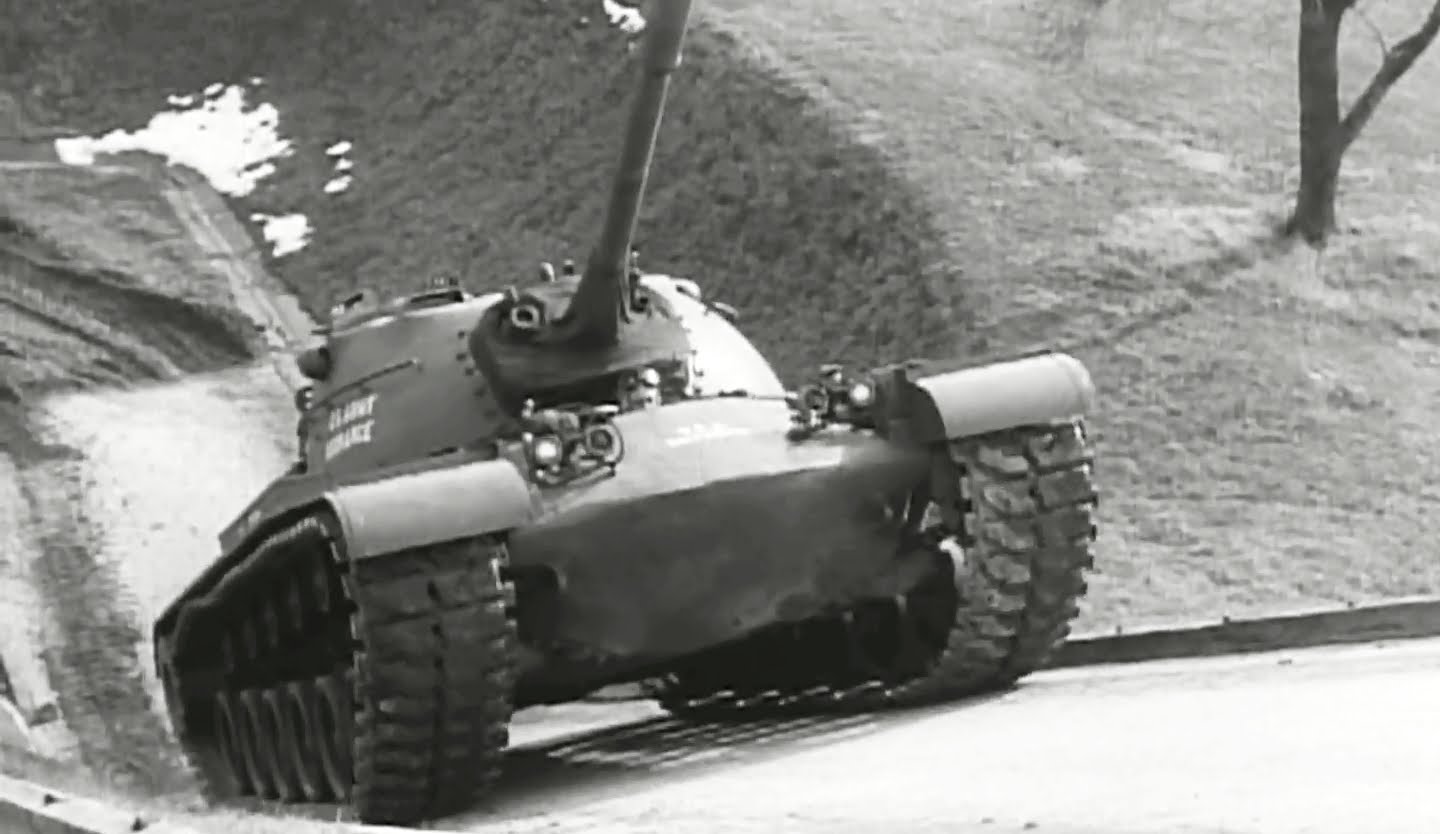more at
‘This is an on-the-spot report from the Aberdeen Proving Ground, Maryland, as to the activities going on — activities to prove our military equipment the finest in any Army. Lieutenant John Mortimer interviews key personnel at Aberdeen, bringing out the importance of the individual’s job in “testing for the best.”‘ Arms tested include the 280mm Atomic Cannon.
“The Big Picture” episode TV-249
The Big Picture TV Series playlist:
Public domain film from the Prelinger Archives, slightly cropped to remove uneven edges, with the aspect ratio corrected, and mild video noise reduction applied.
The soundtrack was also processed with volume normalization, noise reduction, clipping reduction, and/or equalization (the resulting sound, though not perfect, is far less noisy than the original).
Aberdeen Proving Ground (APG) (sometimes erroneously called Aberdeen Proving Grounds) is a United States Army facility located in Aberdeen, Maryland (in Harford County)…
APG is the U.S. Army’s oldest active proving ground, established on October 20, 1917, six months after the U.S. entered World War I. Its location allowed design and testing of ordnance materiel to take place near contemporary industrial and shipping centers. The proving ground was created as a successor to the Sandy Hook Proving Ground, which was too small for some of the larger weapons being tested. At the peak of World War II, APG had billeting space for 2,348 officers and 24,189 enlisted personnel.
Edgewood Arsenal
Although civilian contractors produced the major fraction of conventional munitions for World War I, the United States government built federally owned plants on Aberdeen Proving Ground for the manufacture of toxic gas. These poison gas manufacturing facilities came to be known as Edgewood Arsenal. Edgewood Arsenal included plants to manufacture mustard gas, chloropicrin and phosgene, and separate facilities to fill artillery shells with these chemicals. Production began in 1918, reached 2,756 tons per month, and totaled 10,817 tons of toxic gas manufactured at Edgewood Arsenal before the November 1918 armistice. Some of this gas was shipped overseas for use in French and British artillery shells.
The Edgewood area of Aberdeen Proving Ground is approximately 13,000 acres and includes Gunpowder Neck, Pooles Island, Carroll Island, and Graces Quarters. The Edgewood area was used for the development and testing of chemical agent munitions. From 1917 to the present, the Edgewood area conducted chemical research programs, manufactured chemical agents, and tested, stored, and disposed of toxic materials…
From 1955 to 1975, the U.S. Army Chemical Corps conducted classified medical studies at Edgewood Arsenal, Maryland. The purpose was to evaluate the impact of low-dose chemical warfare agents on military personnel and to test protective clothing and pharmaceuticals. About 7,000 soldiers took part in these experiments that involved exposures to more than 250 different chemicals…
Other parts of APG not attached to the main installation include the Churchville Test Area in Harford County, and the Carroll Island and Graces Quarters in Baltimore County, Maryland. The Churchville Test Area is a test track with hills that provide steep natural grades and tight turns to stress engines, drivetrains, and suspensions for army vehicles, including M1 Abrams tanks, Bradley Fighting Vehicles, and Humvees.
The eastern half Carroll Island was used as a testing location for open air static testing of chemical weapons since the 1950s. During tests of chemical agents and other compounds at Carroll Island, Maryland, from July 1, 1964 to December 31, 1971 nearly 6-1/2 tons of chemicals were disseminated on the test area including 4,600 pounds of irritants, 655 pounds of anticholinesterase compounds such as the nerve gasses Sarin and VX, and 263 pounds of incapacitants such as LSD. Simulant agents, incendiaries, decontaminating compounds, signaling and screening smokes, mustard, and herbicides were also released as well as riot control gasses. The test sites consisted of spray grids, a wind tunnel, test grids, and small buildings…
The Churchville Test Area is a United States Army facility of the Aberdeen Proving Ground, located northeast of Bel Air, Maryland (in Harford county, Maryland, USA).
The Churchville Test Area (39.596°N 76.253°WCoordinates: 39.596°N 76.253°W) is a hilly set of cross-country road test tracks providing a variety of steep natural grades and tight turns designed to stress engines, drivetrains and suspension systems for Army vehicles, such as the M1 Abrams tanks, M2 Bradley fighting vehicle and the Humvee…

